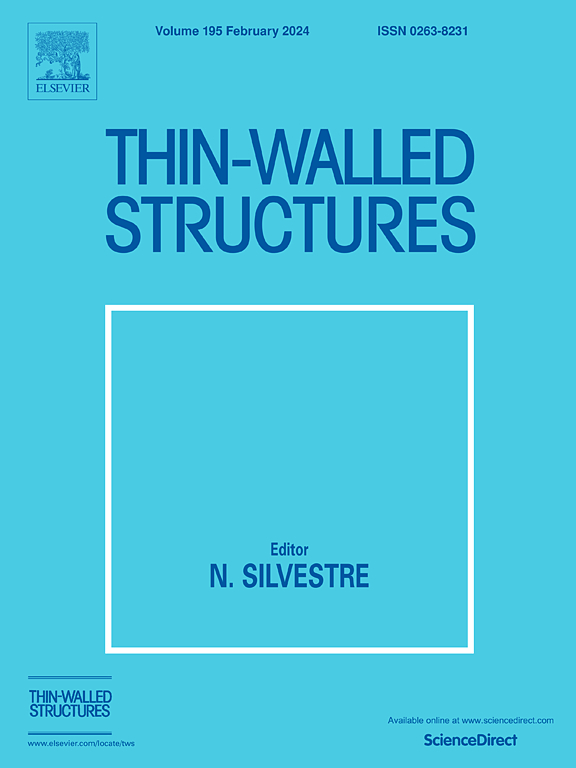Local buckling failure analysis of pipelines containing a dent-corrosion defect under combined internal pressure and bending moment
IF 6.6
1区 工程技术
Q1 ENGINEERING, CIVIL
引用次数: 0
Abstract
In this work, a nonlinear finite element (FE) model was developed to examine the local buckling failure of X80 steel large-diameter pipelines containing a dent-corrosion defect under combined internal pressure and bending moment. The developed model captured the local physical conditions at the defect zone and investigated the influences of buckling failure process, critical bending moment, and plastic deformation propagation. Critical parameters, including corrosion geometries, pipeline dimensions, dent depth, and internal pressure, were evaluated for their effects on the critical buckling moment. The results revealed that the critical buckling moment positively correlates with pipe diameter, wall thickness, corrosion length, and corrosion depth while negatively correlating with dent depth and internal pressure. When the corrosion depth-to-thickness ratio , the buckling moment reduces by over 50 %. Shallow dents () induce significant stress concentration, while deeper dents () enhance buckling resistance due to strain hardening. Among the factors studied, pipe diameter and wall thickness influence buckling capacity most, whereas internal pressure has a slight effect. Corrosion is the primary factor contributing to the buckling failure of a pipeline with a dent-corrosion defect.
内压和弯矩联合作用下含凹痕腐蚀缺陷管道局部屈曲失效分析
建立了含有凹痕腐蚀缺陷的X80钢大直径管道在内压和弯矩联合作用下的局部屈曲破坏非线性有限元模型。所建立的模型捕捉了缺陷区域的局部物理条件,研究了屈曲破坏过程、临界弯矩和塑性变形传播的影响。评估了腐蚀几何形状、管道尺寸、凹痕深度和内部压力等关键参数对临界屈曲力矩的影响。结果表明:临界屈曲力矩与管径、管壁厚度、腐蚀长度、腐蚀深度呈正相关,与凹痕深度、内压呈负相关;当腐蚀深厚比d/t>;0.3时,屈曲弯矩减小50%以上。浅凹痕(≤4%D)引起显著的应力集中,而深凹痕(≥6%D)由于应变硬化而增强抗屈曲能力。其中管径和壁厚对屈曲能力的影响最大,内压对屈曲能力的影响较小。腐蚀是导致带凹痕腐蚀缺陷管道屈曲失效的主要因素。
本文章由计算机程序翻译,如有差异,请以英文原文为准。
求助全文
约1分钟内获得全文
求助全文
来源期刊

Thin-Walled Structures
工程技术-工程:土木
CiteScore
9.60
自引率
20.30%
发文量
801
审稿时长
66 days
期刊介绍:
Thin-walled structures comprises an important and growing proportion of engineering construction with areas of application becoming increasingly diverse, ranging from aircraft, bridges, ships and oil rigs to storage vessels, industrial buildings and warehouses.
Many factors, including cost and weight economy, new materials and processes and the growth of powerful methods of analysis have contributed to this growth, and led to the need for a journal which concentrates specifically on structures in which problems arise due to the thinness of the walls. This field includes cold– formed sections, plate and shell structures, reinforced plastics structures and aluminium structures, and is of importance in many branches of engineering.
The primary criterion for consideration of papers in Thin–Walled Structures is that they must be concerned with thin–walled structures or the basic problems inherent in thin–walled structures. Provided this criterion is satisfied no restriction is placed on the type of construction, material or field of application. Papers on theory, experiment, design, etc., are published and it is expected that many papers will contain aspects of all three.
 求助内容:
求助内容: 应助结果提醒方式:
应助结果提醒方式:


